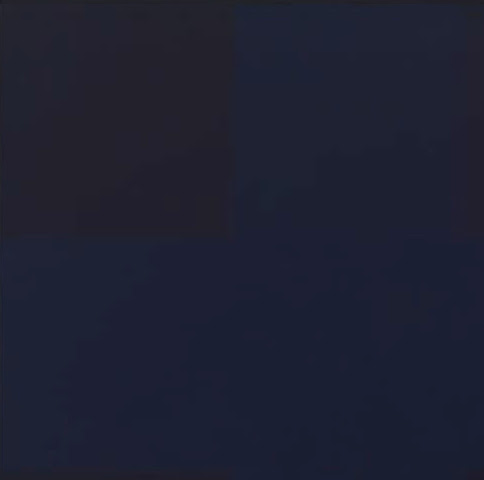A Question of Color
The whole world, as we experience it visually, comes to us through the mystic realm of color.
Our entire being is nourished by it. This mystic quality of color should likewise find expression in a work of art.
Hans Hoffman
In starting this article we looked at quotes by masters including Picasso, Gauguin, Monet, Turner, and Hoffman to name a few. We selected this quote because it expressed the symbiosis of color and our being.
This relationship is most telling when someone is asked, “What is your favorite color?” It is an extraordinarily intimate question. Even asking about one’s favorite food or sex life is somehow trivial in comparison. Many people will answer this question with a safe answer, “Blue.” I have done this on questionnaires, only because which blue, when that blue, and why? For me it is a very confusing question as I have no one food, there’s no one favorite color. And, like food, color cannot stand alone but is always paired with another color or colors.
To pick a color is to make a statement, especially a color for something like a room, a door, or a house. We recently had an experience with a client who has an extraordinary sense of color. They are not an artist by training, but they grew up in the tropics and were exposed to an extraordinarily rich color palette and for their own home they sought the same freshness. They wanted something distinctive, yet harmonious.
After much deliberation and daily visits to the local paint store it became clear there was no readily available color for the body of the house. This led us into the world of color theory. To my eye and having seen the colors selected, but failed, we were looking to avoid “garish or bland.” We needed to find a color that the owner could live with and one which would not become stale over time. This would be the color of the home for the next 15 to 20 years, maybe longer. With these constraints, the search continued without much success. The daily mantra soon became, “It just doesn’t feel right.” And, as the painting contractor struggled to find the right color, the conversation stalled.
It is for this reason that we see so many of the same colors in homes. Not unlike the genius who doesn’t see the value in having a varied wardrobe always looking the same, home designers fall into this same trap. Color is too personal and complicated, so there are the ubiquitous colors: Navajo White, Swiss Coffee, Dove White, and now Gray Whisper. While functional, these colors neither accent structures nor neighborhoods. They are vanilla. They are easy.
We believe color is grander than just a simple paint swatch. It is tonal; it is musical; it is essential.
As the conversation became more nuanced it drifted to the great color theorists. While there are others, the first is Joseph Albers, whose work most every artist knows. He is most famous for his superimposed color squares. And, while much of his writing takes on a scientific or philosophical bent, the principle he adhered to most greatly was curiosity, like a scientist, always seeking the unexpected. He believed color is not static and that “color the most relative medium in art.” This was the first reference given to the client.
Joseph Albers in Mexico, by Nur Guzeldere - Guggenheim Museum, 2018
It was with Albers that the discussion of what to paint the home expanded. For the house painter, it was a conversation without end, but in the end an important conversation. While the front door quickly became the Benjamin Moore’s color “Citrus Burst” #364, the rest of the house remained a question.1
The greatest challenge with color is that it is infinite and a subtle shift in hue, chroma, value, and saturation can result in an exciting color or something that leaves the observer feeling flat. For example, Benjamin Moore's Chelsea Gray is a nice safe color that does not influence other colors or change with different lighting conditions. It is in our opinion flat and was not selected.
The artist Ad Reinhardt, another color theorist, was shared with the client. Reinhardt built a career around understanding how color influences its surroundings and as well as how it is influenced by light. Below is a small section of one of his paintings. Working with black for the last ten years of his life, he would tint black in various ways while keeping the value of adjacent blacks the same.
This is important because so many artists have warned others black is something less than color, to be avoided at all cost.2 So, the question becomes, what is black? If you squint the entire area appears black when it is not. The same is true for all other colors. What are they? What is a good color versus a bad color? Moreover, is there anything such as either a good or a bad color? What we do know is that color can be either dull or exciting and quite often this is a juxtaposition. It evokes feelings.

A section of an Ad Reinhardt painter (Abstract Painting, No. 34, 1964)
As the color selection on our project narrowed, two picks were Sherwin Williams Monorail Silver #7663 seen below the bluish swatch in the photos of the windows and Wall Street #7665 above. While Monorail was safe Wall Street was a little dark. Neither was the right tint or hue.
Still not satisfied with the colors or any of the many standard paint selections, the conversation shifted to how could we get the right color? The solution was to mix our own colors in the field, painting on walls in direct and indirect light and on a board so that it could be scanned with a spectrometer by a paint supplier.3
Below are our in-field results. The owner was looking for something with a value between the Monorail and Wall Street, but they also wanted something with a little blue. The blue swatch on the left was the first attempt and to the right of the first and around the corner was the second and final mix.

With this, the owner purchased a quart of paint based upon the spectrograph results. Next, it was applied to the wall as a color check, keeping the original board as a reference. The result is shown below in both direct and indirect light. The color which is completely custom resonates with the sky and looks completely different in each lighting condition ultimately giving the home a fresh and unique appearance which at the same time allows the home to nestle into its environment.
Lastly, when trying to select colors for the outside of a home, travel your neighborhood and note the colors you like. As always we welcome your thoughts and questions. And, be looking forward to photos of the front door with Citrus Burst.
_____
Endnotes
1. https://www.benjaminmoore.com/en-us/color-overview/find-your-color/color/364/citrus-burst?color=364, note the color representation online is not accurate - for the actual color, a sample is required.
2. The Mannerists would disagree.
3. All major paint suppliers provide color matching services. Once received the scanning process takes about 2 days.
Selling Your Home?
Get your home's value - our custom reports include accurate and up to date information.


